Comparing Study Abroad Trips: Havana, Cuba Versus San Sebastian, Spain
My freshman year of college I made one of the best decisions of my life. That decision was to study abroad for my first time ever in San Sebastian, Spain. It was a three week summer program in which you live with a host family, take Spanish classes at a local school, and then meet as a group with our UMass Lowell faculty member to explore different topics and places in the city. This faculty member, Julian Zabalbeascoa, actually runs a different trip, as well, one that travels to Havana, Cuba, during the winter intersessions. As you can tell, I decided that I wanted to attend this trip, as well. So two years after my time in San Sebastian, I was on a flight to Havana, ready to see how this new study abroad measured up to the first. Now that I’ve had some time to look back on my experiences, I want to compare the two trips in order to shed some light on what they’re really all about.
Going in chronological order, I first studied abroad in San Sebastian the summer of 2017. I had just finished my first year of college and had this trip swirling around my mind for months previous to my departure. Everything was new territory: flying on my own, being in a Spanish speaking country, and studying abroad in general. I felt this surge of newfound independence and autonomy. Of course, the trip was beautiful, even better than it looks in the pictures. We lived in pairs with different host families around the city. Because of this, it didn’t take more than a minute to feel 100% immersed in the city. I pushed myself to get out of my comfort zone with the foods I ate and the things I did. Without a doubt, I loved the person I felt like I became during this trip; someone who was more out of their shell and more in touch with the essence of life.
had just finished my first year of college and had this trip swirling around my mind for months previous to my departure. Everything was new territory: flying on my own, being in a Spanish speaking country, and studying abroad in general. I felt this surge of newfound independence and autonomy. Of course, the trip was beautiful, even better than it looks in the pictures. We lived in pairs with different host families around the city. Because of this, it didn’t take more than a minute to feel 100% immersed in the city. I pushed myself to get out of my comfort zone with the foods I ate and the things I did. Without a doubt, I loved the person I felt like I became during this trip; someone who was more out of their shell and more in touch with the essence of life.
For me, this trip was all about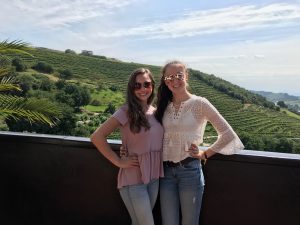 connecting with myself. I learned a lot, did a lot of cool things, and made memories I will never forget. But the personal growth I got out of it is what hits me the most.
connecting with myself. I learned a lot, did a lot of cool things, and made memories I will never forget. But the personal growth I got out of it is what hits me the most.
Two years later, I finally committed to the decision that I would also study abroad in Havana, Cuba, during the Winter 2019 intercession. I was a little bit older now, and I had already experienced the magic of traveling on my own once before. Nonetheless, I was just as excited to embark 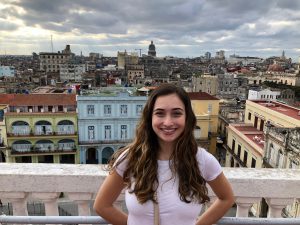 on another meaningful life experience. Cuba was different for a few reasons. One that stands out in my mind is how much time we spent as a UML group. Of course there are logistical reasons behind this, but we definitely always had a few hours together every day, which was not the case in Spain. All the students also lived together, which was new for me. I actually liked this because it made it way easier to communicate since phones are out of the picture. And the final largest difference was the age of the group, and what they wanted out of the trip. When I went to Spain, almost all of us were on the younger side, and intended to simply experience the world with other young people. Those who went on the Cuba trip were all, in comparison, a slightly older crowd who wanted to learn about the real Cuba in order to break down any stereotypes that may surround it. It felt a touch more educational in regards to our world and our
on another meaningful life experience. Cuba was different for a few reasons. One that stands out in my mind is how much time we spent as a UML group. Of course there are logistical reasons behind this, but we definitely always had a few hours together every day, which was not the case in Spain. All the students also lived together, which was new for me. I actually liked this because it made it way easier to communicate since phones are out of the picture. And the final largest difference was the age of the group, and what they wanted out of the trip. When I went to Spain, almost all of us were on the younger side, and intended to simply experience the world with other young people. Those who went on the Cuba trip were all, in comparison, a slightly older crowd who wanted to learn about the real Cuba in order to break down any stereotypes that may surround it. It felt a touch more educational in regards to our world and our 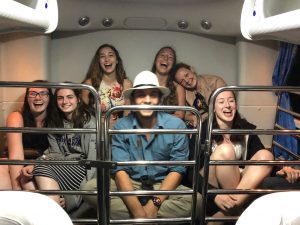 history, and how its impacts can be seen in Cuba today. It was not the beach vacation some people imagine San Sebastian to be. Cuba truly was a trip to gain understanding of how others live in the world around us. I love the respect I gained for Cubans through this trip, and I found myself connecting on a deeper level with my fellow students. Our conversations over dinner, whether they be about Cuba or not, made me think about life and what I want to do with mine. So rather than just finding myself, I really found genuine connection with others.
history, and how its impacts can be seen in Cuba today. It was not the beach vacation some people imagine San Sebastian to be. Cuba truly was a trip to gain understanding of how others live in the world around us. I love the respect I gained for Cubans through this trip, and I found myself connecting on a deeper level with my fellow students. Our conversations over dinner, whether they be about Cuba or not, made me think about life and what I want to do with mine. So rather than just finding myself, I really found genuine connection with others.
Looking back, I feel that I gained a lot from both of these trips. You may have noticed I used the phrase “life experience” earlier, and that’s because I truly believe a study abroad trip gives you life experience. It is something you can hold on to forever, and that will permanently alter you. I would highly recommend both of these trips, especially if they are out of your comfort zone because no vacation in the world could mimic what a study abroad can do for a person. If you are hesitant, be brave. If you’re a picky eater, try something new. Even if you don’t speak any Spanish (like me), go to Spain or Cuba anyway and learn. I want to thank the honors college, API, and Professor Zabalbeascoa for allowing me these experiences that were immensely important to myself and my college experience. They were life experiences I hold near my heart and always will. 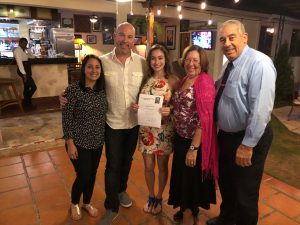
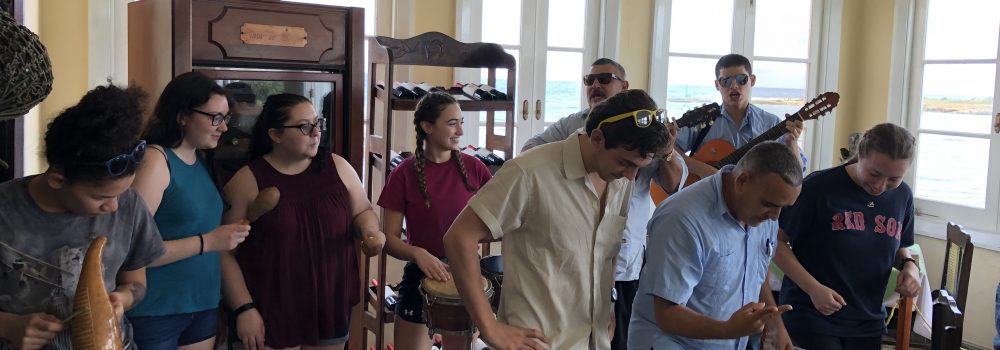
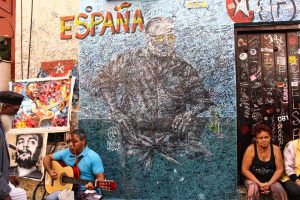
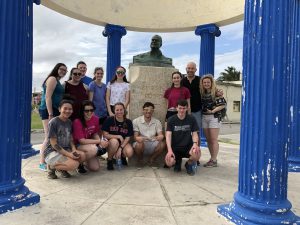



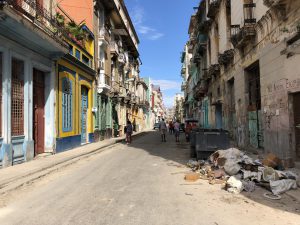
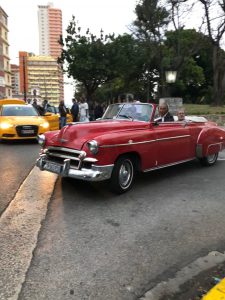 it seem so dated had been due to the embargo and it’s crippling effects on Cuba as a whole. However, everywhere we went, we saw progress being made to improve the crumbling infrastructure. I sincerely hope they continue to slowly but surely revamp the country so that its infrastructure mirrors the progress the people have made in these recent years.
it seem so dated had been due to the embargo and it’s crippling effects on Cuba as a whole. However, everywhere we went, we saw progress being made to improve the crumbling infrastructure. I sincerely hope they continue to slowly but surely revamp the country so that its infrastructure mirrors the progress the people have made in these recent years.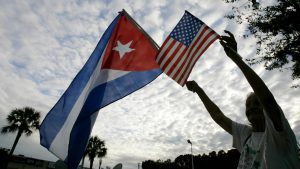
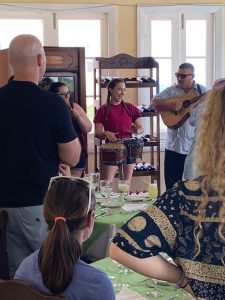

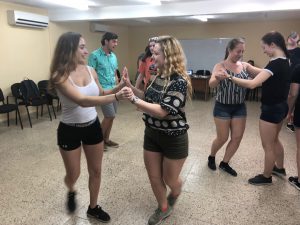
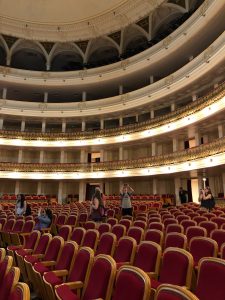
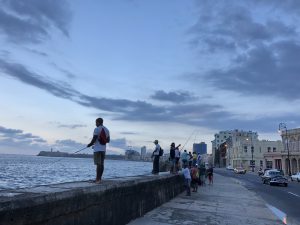
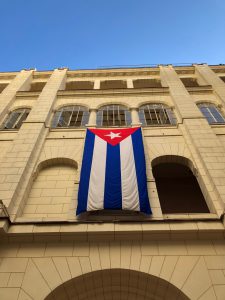 affection for my country, as most people typically do. But I can also recognize how easy it is to slip into the belief that our country is the best country. Even, perhaps, that other countries would benefit by following similar schematics we follow in politics, economics, etc. This is where that patriotism turns more nationalism. That being sai
affection for my country, as most people typically do. But I can also recognize how easy it is to slip into the belief that our country is the best country. Even, perhaps, that other countries would benefit by following similar schematics we follow in politics, economics, etc. This is where that patriotism turns more nationalism. That being sai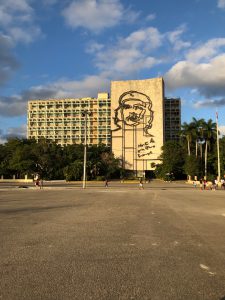 was something along the lines of this: ‘Cuba might have it’s problems, and it might be a piece of trash, but it’s OUR trash. I am so proud to live here and be Cuban.’ Anyone could tell that this came from the heart because Ana had tears in her eyes by the end of her sentiment. Honestly, I could have teared up as well. I don’t know anyone here in the U.S that knows as much about their country as Ana does about hers. She knows every fact, every piece of history, every custom and piece of culture. It even seems like she knows every person in Cuba. And for every bit of information she knew, she relayed it while beaming with pride and love. This was consistent throughout the people on this island; no matter who you talked to, they were more than happy and willing to tell you about their country.
was something along the lines of this: ‘Cuba might have it’s problems, and it might be a piece of trash, but it’s OUR trash. I am so proud to live here and be Cuban.’ Anyone could tell that this came from the heart because Ana had tears in her eyes by the end of her sentiment. Honestly, I could have teared up as well. I don’t know anyone here in the U.S that knows as much about their country as Ana does about hers. She knows every fact, every piece of history, every custom and piece of culture. It even seems like she knows every person in Cuba. And for every bit of information she knew, she relayed it while beaming with pride and love. This was consistent throughout the people on this island; no matter who you talked to, they were more than happy and willing to tell you about their country.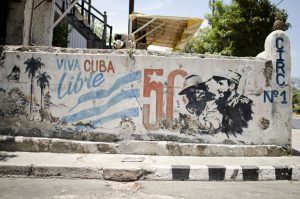

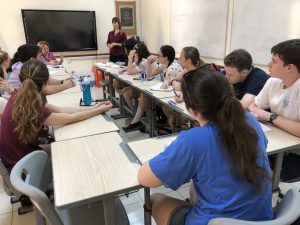
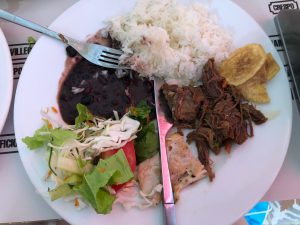
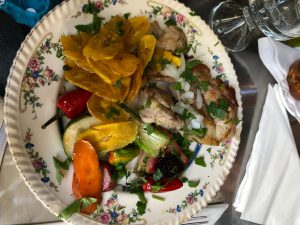
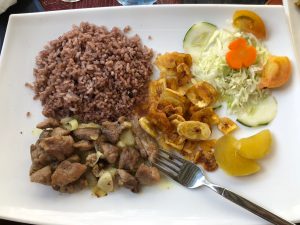
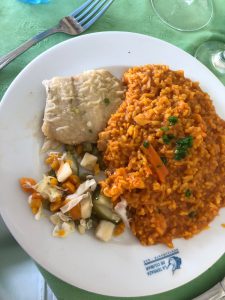 Now, for all of my picky eaters who may not be sold yet, let me reassure you that you will find plenty of food you love or grow to love on this trip. I am definitely on the picky side, and before going to Cuba I think I had eaten beans once in my life. These days, I legitimately crave them. So don’t be scared to try new things! Because if anyone can make a tasty bean and rice dish, it’s the Cuban people, and especially our host mom Natalia.
Now, for all of my picky eaters who may not be sold yet, let me reassure you that you will find plenty of food you love or grow to love on this trip. I am definitely on the picky side, and before going to Cuba I think I had eaten beans once in my life. These days, I legitimately crave them. So don’t be scared to try new things! Because if anyone can make a tasty bean and rice dish, it’s the Cuban people, and especially our host mom Natalia.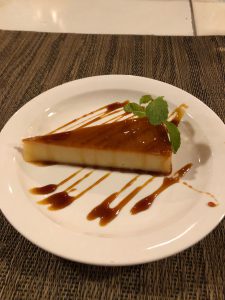 Cuisine is such a cornerstone of any culture, and I felt that the Cuban people really embraced us through their dishes. Not only were we offered tasty, well-known dishes, we were also offered an invitation to join the Cuban people around us in their dining experience. At restaurants we were often swept off our feet by the band that was playing, and ended up with an instrument in hand or dancing to the beat. Cuban restaurants have a way of making you feel so welcome and included, and in that way, they are a perfect mirror of Cuba itself.
Cuisine is such a cornerstone of any culture, and I felt that the Cuban people really embraced us through their dishes. Not only were we offered tasty, well-known dishes, we were also offered an invitation to join the Cuban people around us in their dining experience. At restaurants we were often swept off our feet by the band that was playing, and ended up with an instrument in hand or dancing to the beat. Cuban restaurants have a way of making you feel so welcome and included, and in that way, they are a perfect mirror of Cuba itself.

